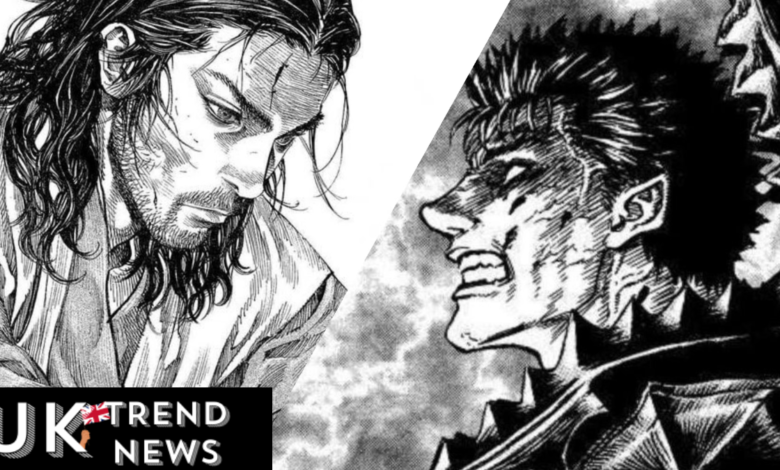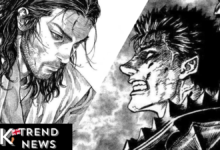Vagabond Manga: A Masterpiece of Samurai Storytelling

Introduction
Few manga series have left as profound an impact on the world of storytelling as Vagabond. Created by Takehiko Inoue, this visually stunning and philosophically rich manga is a loose adaptation of Musashi, the famous novel by Eiji Yoshikawa. The story follows the life of Miyamoto Musashi, a legendary samurai, chronicling his journey from a brash warrior to an enlightened swordsman.
What sets Vagabond apart from other samurai manga is its deeply introspective approach, breathtaking artwork, and intense character development. Unlike conventional battle-driven stories, Vagabond delves into the psyche of its protagonist, exploring themes of strength, ambition, inner peace, and the philosophy of the sword. Through its masterful storytelling and exceptional visual design, the manga has captivated readers worldwide and remains one of the most celebrated works in the genre.
Plot Summary and Themes
![ART] Vagabond still is to this day one of the most beautiful manga I've read : r/manga](https://preview.redd.it/00f6x5n38e931.jpg?width=640&crop=smart&auto=webp&s=3c16c0c7f1659e6faf6e2f837408c40496506c05)
At its core, Vagabond tells the tale of Takezō Shinmen, a young warrior with raw talent but little discipline. After surviving the Battle of Sekigahara, Takezō embarks on a journey of self-discovery, later adopting the name Miyamoto Musashi. His path is riddled with brutal duels, philosophical struggles, and encounters with remarkable figures, including his childhood friend Matahachi, the monk Takuan, and the deaf swordsman Sasaki Kojiro.
One of the most compelling aspects of Vagabond is its exploration of deep philosophical themes. The manga does not merely glorify violence but questions the true meaning of strength. Musashi constantly wrestles with his own ambitions, gradually realizing that being undefeated does not equate to true mastery. The story also presents a stark contrast between Musashi and Kojiro—one seeking wisdom through hardship and the other embodying innate genius. Through their intertwined destinies, Vagabond crafts an intricate narrative that challenges the reader’s perception of power and purpose.
Art and Storytelling in Vagabond
Takehiko Inoue’s artwork in Vagabond is nothing short of breathtaking. His use of detailed brush strokes, inspired by traditional Japanese ink paintings, elevates the manga to an artistic masterpiece. Every panel is meticulously crafted, capturing the intensity of battle, the serenity of nature, and the raw emotions of the characters. The expressive visuals make the story feel alive, with dynamic motion and deeply evocative character designs.
Beyond the art, Vagabond excels in storytelling. Unlike many action-driven manga, Inoue adopts a methodical pace, allowing readers to fully immerse themselves in Musashi’s journey. Dialogue is often sparse, leaving room for visual storytelling to convey emotions and unspoken thoughts. Inoue’s ability to blend silence, action, and introspection creates a uniquely immersive experience, making Vagabond feel more like a cinematic masterpiece than a traditional manga.
The Impact and Legacy of Vagabond
Since its debut in 1998, Vagabond has garnered widespread acclaim and numerous awards, including the prestigious Kodansha Manga Award and the Tezuka Osamu Cultural Prize. It has influenced not only manga artists but also filmmakers and novelists, proving that samurai stories can be both action-packed and profoundly philosophical.
Unlike other popular samurai manga such as Rurouni Kenshin or Blade of the Immortal, Vagabond leans heavily on realism. There are no over-the-top supernatural abilities—only raw human struggle, pain, and perseverance. This realism has resonated with readers, cementing its place as one of the most critically acclaimed manga of all time.
Despite being unfinished, Vagabond has inspired countless works in the samurai genre. Its introspective storytelling and exceptional art continue to attract new generations of fans, proving that great stories can transcend time.
The Hiatus and Future of Vagabond
One of the most heartbreaking aspects of Vagabond is its indefinite hiatus. In 2010, Takehiko Inoue stopped working on the manga, citing personal and creative burnout. While he has not officially declared the series canceled, there have been no new chapters for over a decade, leaving fans in suspense.
Inoue has since focused on other projects, particularly REAL, a manga about wheelchair basketball. Despite his silence on Vagabond, many fans still hold onto hope that he will one day return to complete Musashi’s journey. However, given the long hiatus, it remains uncertain whether the manga will ever see a conclusion. This unresolved status has only added to the mystique of Vagabond, leaving readers to speculate about how Musashi’s story might have ended.
Conclusion
Even without an ending, Vagabond remains one of the greatest manga ever created. Its philosophical depth, stunning artwork, and compelling character arcs set it apart from other works in the samurai genre. Takehiko Inoue’s ability to blend action with introspection creates an experience that goes beyond simple storytelling—it becomes a journey of self-discovery for the reader as well.
For those who have yet to experience Vagabond, it is a must-read, despite its unfinished status. The journey of Miyamoto Musashi is one of the most profound tales in manga history, and its legacy continues to inspire audiences around the world.
Frequently Asked Questions (FAQs)
1. Is Vagabond historically accurate?
While Vagabond is based on real historical figures, it takes creative liberties for dramatic storytelling. The manga is inspired by Musashi, a novel that romanticizes the samurai’s life rather than strictly adhering to history.
2. Why did Takehiko Inoue stop working on Vagabond?
Inoue has cited personal exhaustion and a desire to focus on other projects as reasons for the hiatus. He has not confirmed whether he will return to the series.
3. Where can I read Vagabond legally?
Manga collectors can find physical volumes through publishers like Viz Media, while digital copies are available on official platforms like ComiXology and Kindle.
4. How does Vagabond compare to other samurai manga?
Unlike Rurouni Kenshin or Blade of the Immortal, Vagabond is deeply philosophical and realistic, focusing more on self-discovery than pure action.
5. Will Vagabond ever be completed?
As of now, there is no official confirmation regarding the completion of Vagabond. Fans remain hopeful, but the future of the series remains uncertain.
6. What are some manga similar to Vagabond?
If you enjoy Vagabond, you might also like Lone Wolf and Cub, Blade of the Immortal, or Shigurui—all of which explore samurai themes with mature storytelling.
